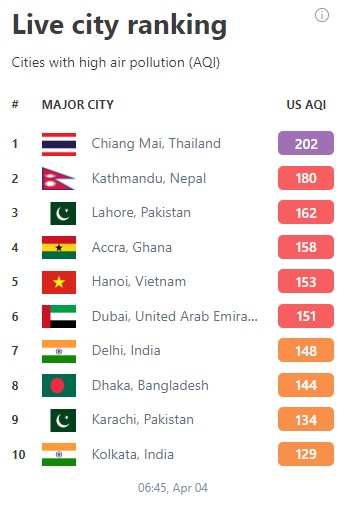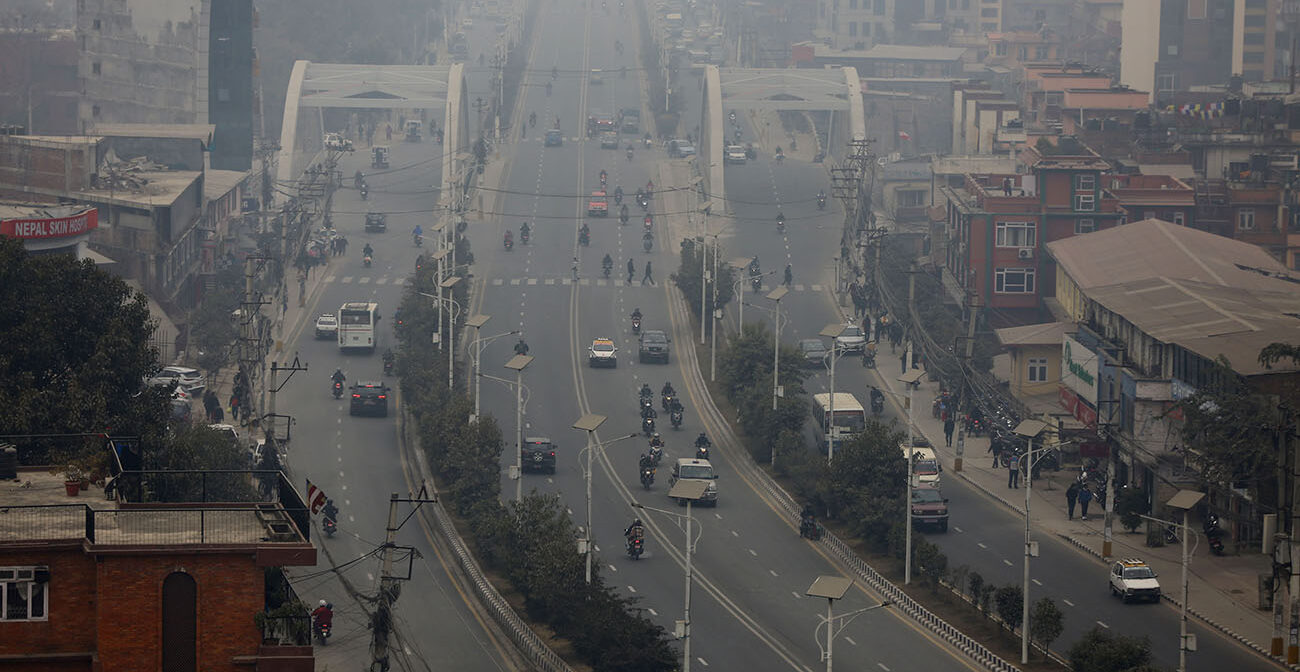KATHMANDU: The air quality in Kathmandu, Nepal’s capital, has reached concerning levels, with PM2.5 levels hitting 184 micrograms per cubic meter (μg/m3) as of 7:45 am this morning, based on data from IQ AirVisual.
This places Kathmandu as the second most polluted city globally.
The current PM2.5 concentration is 24 times higher than the annual air quality guideline value set by the World Health Organization (WHO).
Presently, Chiang Mai in Thailand holds the title for the most polluted city in the world in terms of air pollution.
Here is the list of 10 most polluted cities in terms of air pollution:

Causes of Pollution in Kathmandu
Kathmandu’s heightened pollution levels stem from various factors, including both human and geographical elements. The city’s geographical location, nestled within a valley surrounded by mountains and bordered by China and India, contributes to air stagnation. Additionally, the prevalence of outdated vehicles, operating on obsolete motors and diesel fuels, emits high concentrations of pollutants. Open burning of organic materials due to inadequate waste management infrastructure further exacerbates air quality issues. The aftermath of earthquakes, construction site dust, and the city’s geographical features exacerbate pollutant accumulation, as Kathmandu lacks the elevation and wind to disperse pollutants effectively.
Types of Pollutants Found in Kathmandu
Kathmandu’s pollution primarily comprises fine particulate matter, including black carbon, emitted from incomplete combustion of fossil fuels, wood, and plants. Outdated vehicles relying on diesel fuels contribute significant amounts of black carbon to the air. Other pollutants from vehicles include carbon monoxide (CO), nitrogen dioxide (NO2), ozone (O3), and sulfur dioxide (SO2).
Most Polluted Months in Kathmandu
Analysis of 2019 data reveals that the cleanest air quality occurred in August, with a PM2.5 reading of 11.8 μg/m³. Conversely, pollution levels peaked in January, with a reading of 102.7 μg/m³. Overall, six months of the year recorded unhealthy air quality.
Air Quality Trends
Determining whether air quality in Kathmandu is improving remains uncertain, as fluctuations in pollution levels have been observed in recent years. While there was a slight improvement in 2019 compared to 2018, it still reflects a decline from 2017 levels. Future years will provide insights into whether the city’s air quality is genuinely improving or experiencing fluctuations.
Health Impacts of Air Pollution
Air pollution poses significant health risks, contributing to 7 million premature deaths annually, according to the World Health Organization. It is associated with lung cancer, respiratory infections, stroke, coronary heart disease, and chronic obstructive pulmonary disease. Vulnerable groups, such as those with heart or lung diseases, the elderly, children, pregnant women, outdoor workers, and athletes, are particularly susceptible to severe health effects.
As Kathmandu faces environmental challenges amid economic growth, addressing pollution sources like diesel vehicles and open burning may lead to improvements in air quality over time.









Comment